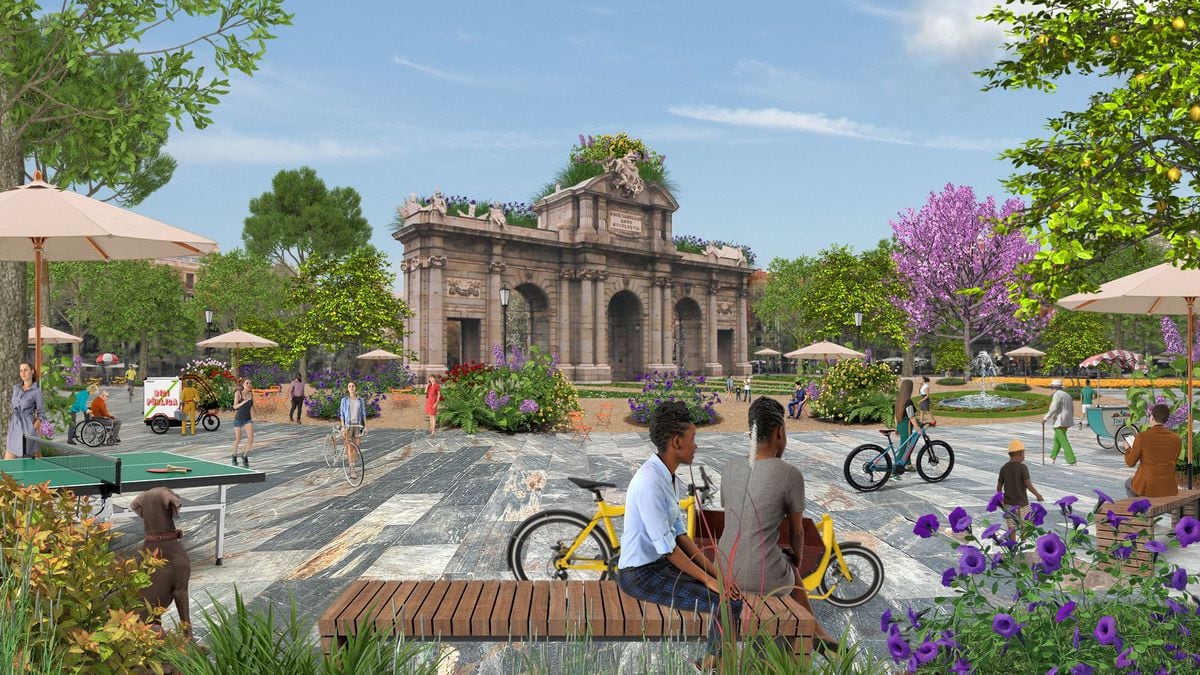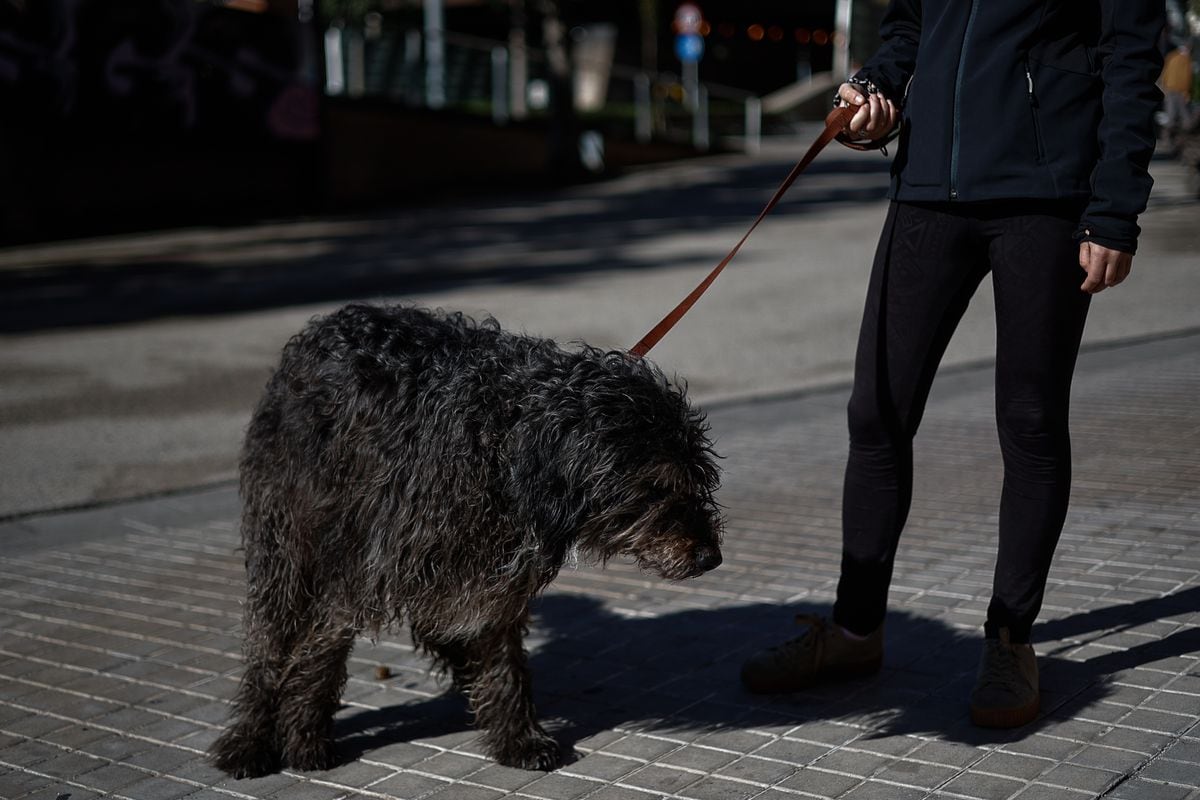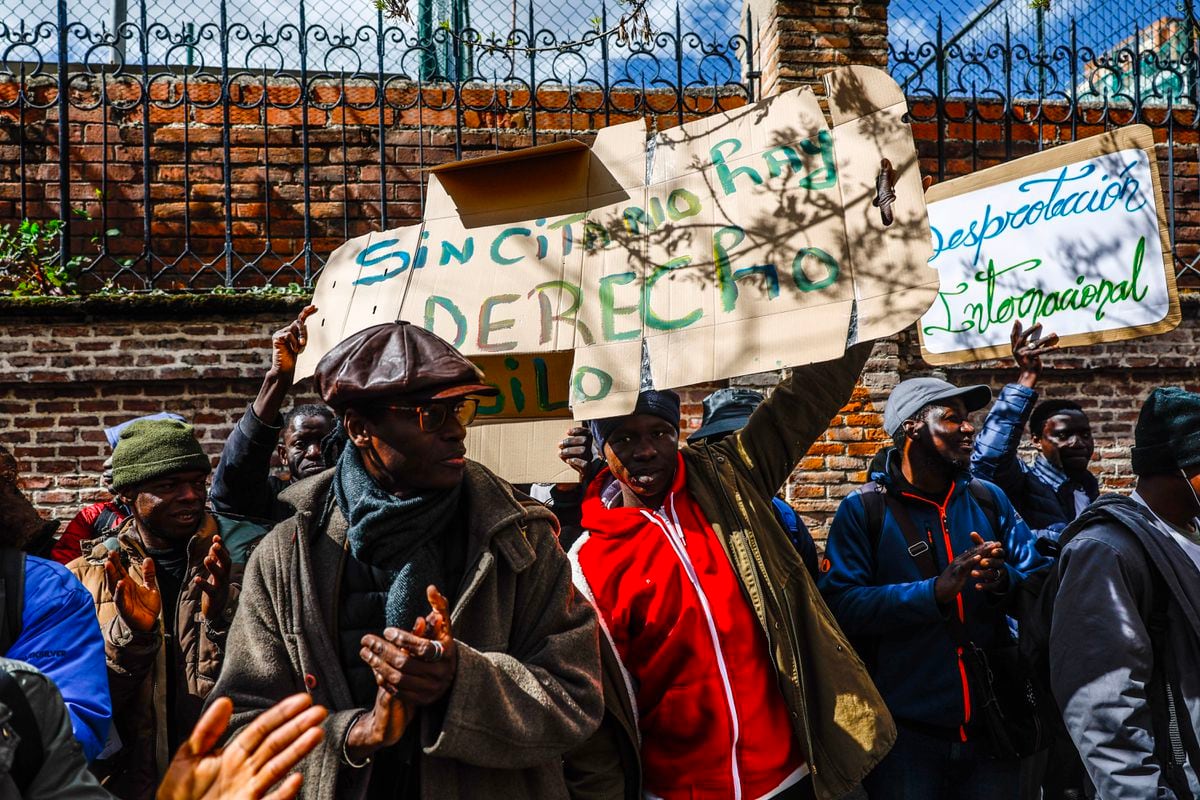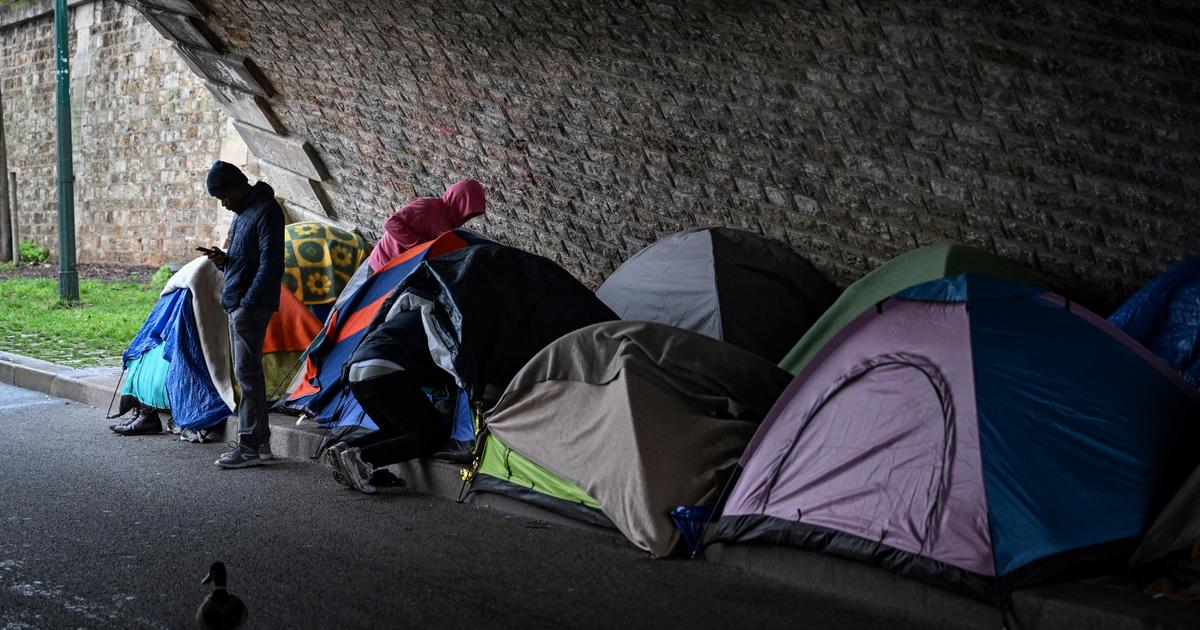Five lanes full of cars and buses suffocate Puerta de Alcalá, one of Madrid's most emblematic monuments, with their smoke every day.
Tourists trying to take a selfie with this heritage gem find it surrounded by traffic, smoke and noise.
But it could be otherwise.
German artist Jan Kamensky creates animated visual utopias in which today's cities give way to a possible greener, car-free future.
His latest creation, which debuts in EL PAÍS, imagines that the door of Carlos III becomes a pleasant environment: "An image can be disruptive, the transformation of cities begins in our minds," he says.
Kamensky (Hamburg, 36 years old) began to reflect on urban space during the first confinement due to the pandemic, when cities were emptied of cars, and thought that he wanted to contribute to imagining them in another way, more pleasant.
This graphic designer then started the Visualutopias.com project, where he builds computer-animated images of emblematic places that usually start from a polluted present and move towards an ecological future.
The artist Jan Kamensky, who creates visual utopias about ecological cities.
Selim Sudheimer
"I hadn't planned to make an animation about Madrid, but this summer I passed through there by train on my way to Lisbon," says the artist, who was traveling from Germany and has stopped taking flights due to climate change, by phone.
“There was a very intense heat wave and I left the train station with my backpack and tried to look for shade, but it was impossible.
I had to walk 20 minutes to find one.
And when I sat under a tree, the traffic noise was still heard.
So I was inspired by that situation to create a visual utopia of the city.”
In most of his projects, Kamensky starts from now and moves towards an ideal tomorrow.
In the case of Madrid, on the other hand, he starts from the past.
“I investigated and saw that a hundred years ago the Puerta de Alcalá had an environment with trees and was very pleasant to walk around, which contrasts with today, where there is a lot of traffic.
But now we only imagine that.
I want to change this situation and for that images are fundamental”, he points out.
In his opinion, these types of creations are very accessible to everyone and have the power to activate change in minds.
In his Madrid creation, we first see a sepia-toned image from a century ago in which people walk calmly through a Puerta de Alcalá that brushes against some trees: an old car, a horse-drawn cart and a bicycle pass by, barely disturb passers-by.
Later, the current version: the trees disappear and everything is filled with cars and motorcycles parked on the sidewalks, between noise, smoke and construction fences;
there are no pedestrians.
But cars and motorcycles fly away and the image of utopia is reached: the trees return, benches appear and people walk or ride bicycles in a city where noise has disappeared.
This idea has sparked the imagination of Antonio Giraldo, a geographer and urban planner who usually proposes alternative projects for the capital, which are shared with great success on social networks (on Twitter he is @giraldeo).
As a result of this visual utopia, Giraldo has developed the #PaseoDeAlcalá initiative.
“This is a project that aims to definitively close traffic on Calle Alcalá between Plaza de Cibeles and Puerta de Alcalá, whose roundabout, Plaza de la Independencia, would become a real square!
A new large pedestrian axis in Madrid”, points out the expert, who plans to present his initiative on social networks in the coming hours with the aim of promoting a transformative debate on this emblematic axis.
What if we pedestrianize the Puerta de Alcalá?
Does anyone find it unacceptable that Madrid's most famous monument is stuck in the middle of a roundabout, surrounded by seven lanes of traffic, and totally inaccessible?
Here is an idea to change it: #PaseoDeAlcala ⬇️Hilo⬇️ pic.twitter.com/4mV0T3Kty0
– Antonio Giraldo (@giraldeo) October 3, 2022
Kamensky, who defines himself as a digital gardener —“I plant trees digitally”—, has created more than 40 similar animations, from Berlin to Paris and from Tokyo to New York, without forgetting his native Hamburg.
His process consists of visiting the city, taking a photo of some emblematic point and then starting the animation.
If he can't travel there—as was the case in Tokyo or Rwanda—he talks to residents to find out more about the context.
Every time one of these utopias is published, it is shared hundreds of times on social networks.
"They reach the whole world, they are shared in Colombia, in the US, in Asia, in Africa... It is the strength of the images," he sums up.
His passion for the initiative has made him leave his old job as a designer at FC St. Pauli in Hamburg to focus on the project.
“Cars are the disease of cities”
“Most of the comments I receive for my visual utopias are positive, although there are also those who complain, and I like to listen to them all”, he adds.
In any case, the German is convinced that "cars are the disease of cities": "They were an experiment of the 20th century, but it has turned out to be a mistake, because if we have cities full of cars we lose many other things, such as health".
Changes in the mobility of cities are always complex: motor vehicles remained around 80% of public space —as the former mayor of Madrid, Manuela Carmena, denounced in EL PAÍS— and drivers are reluctant to lose a millimeter of asphalt or to pay more for on-street parking.
However, the 2020 lockdown was a disruptive moment in which millions of people saw the streets free of traffic and envisaged a radical transformation, with larger sidewalks, more bike lanes and fewer cars.
Some cities are taking advantage of that momentum to make these utopias a reality.
The best example is Paris, which, after pedestrianizing a motorway on the banks of the Seine, is building hundreds of kilometers of bike lanes, is going to eliminate 70,000 parking spaces on the street and plans to fill the Champs-Elysées with trees.
There are examples of cities that are trying not to lose that transformative momentum: Barcelona, Milan, Bogotá, Valencia... Others did it years ago: in Berlin, the iconic Brandenburg Gate has been pedestrianized since 2002. Meanwhile, in Madrid the changes are going to dropper.
"I would love to sit down with the mayor of Madrid to talk about this idea and make it a reality," says the artist.
Although for now his dream is a utopia and the photos of the place will continue to be full of smoke.
You can follow CLIMA Y MEDIO AMBIENTE on
and
, or sign up here to receive
our weekly newsletter
Subscribe to continue reading
read without limits
Keep reading
I'm already a subscriber





/cloudfront-eu-central-1.images.arcpublishing.com/prisa/WVHE5ROKWZFXDAPCRF26MBSEKQ.jpg)



